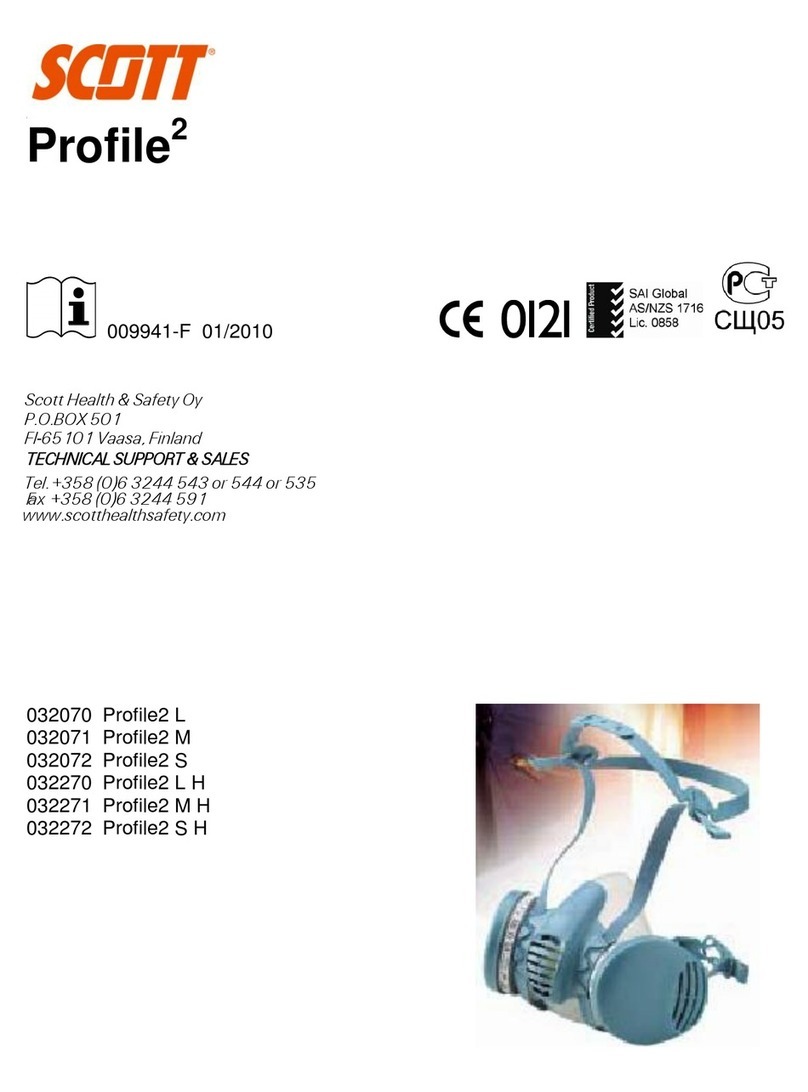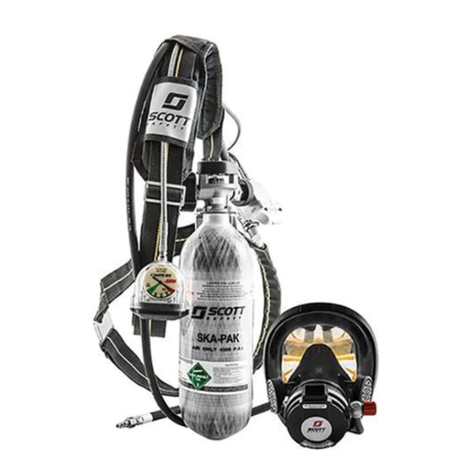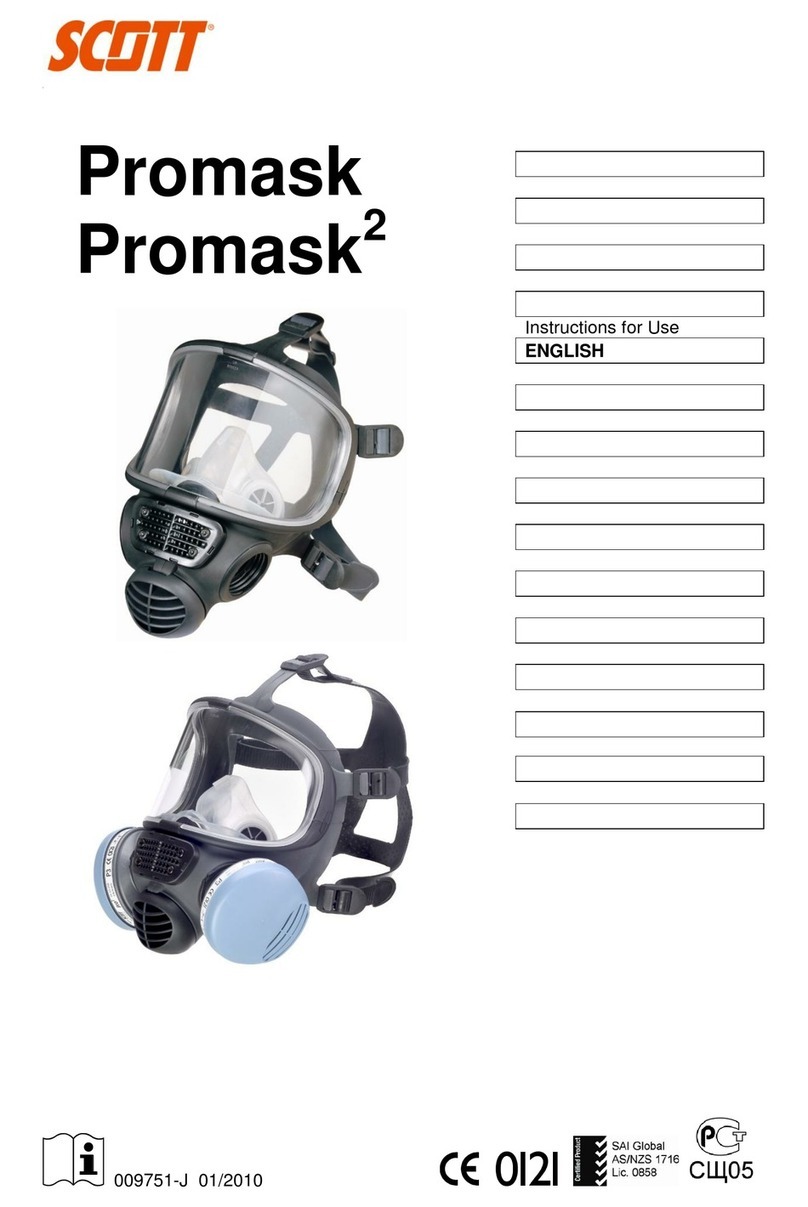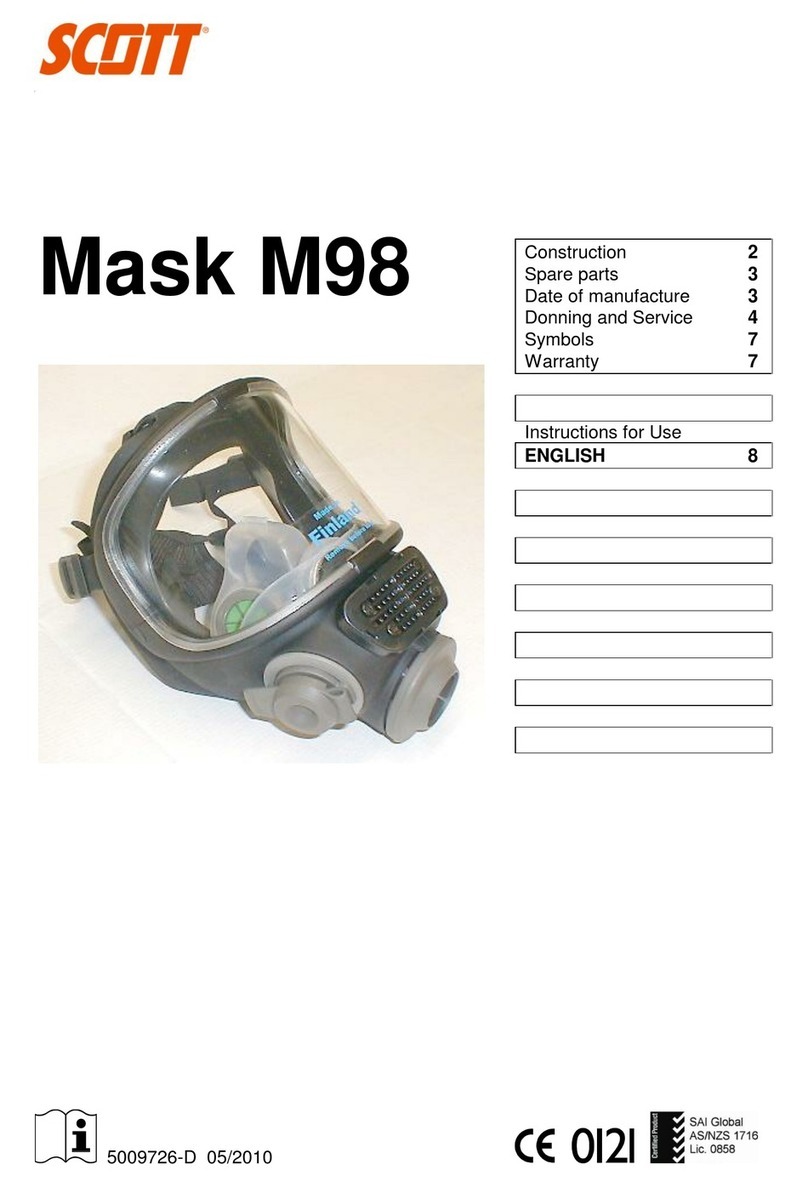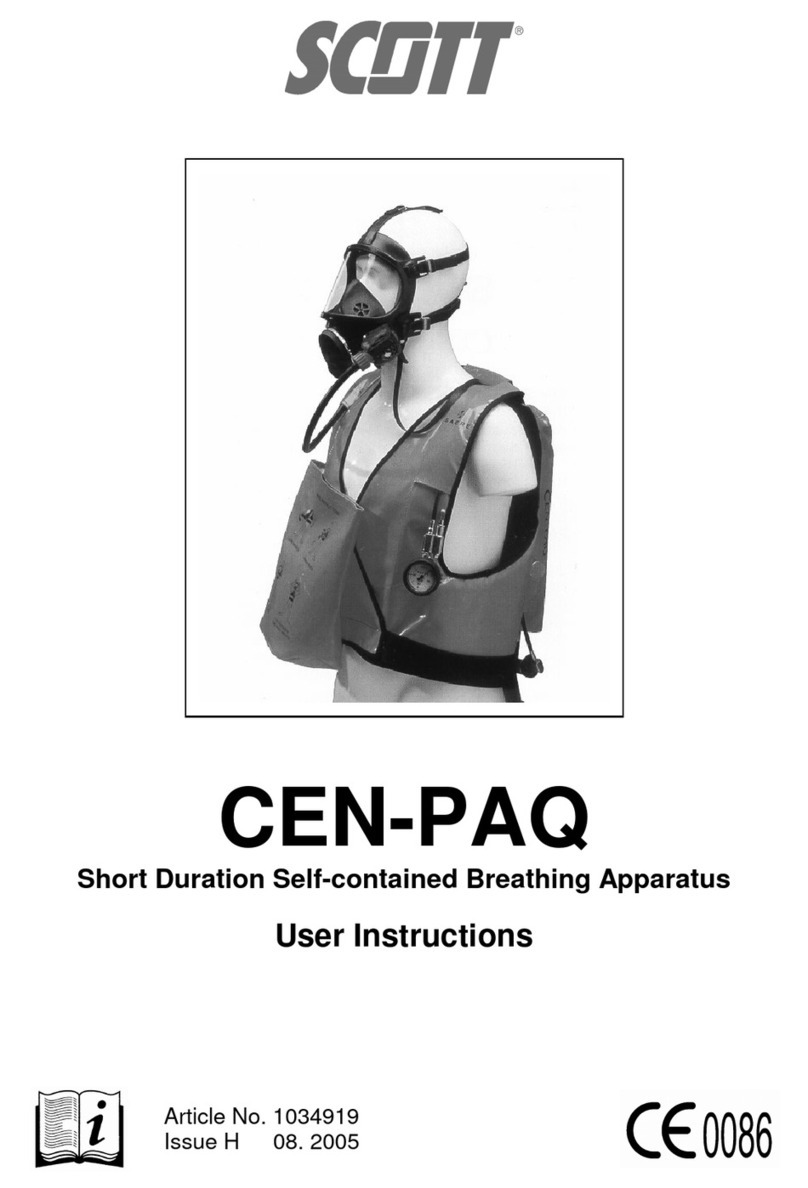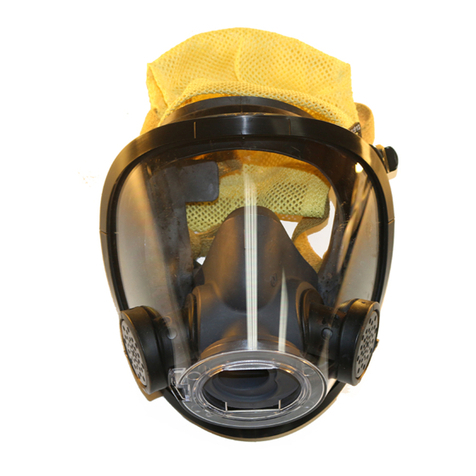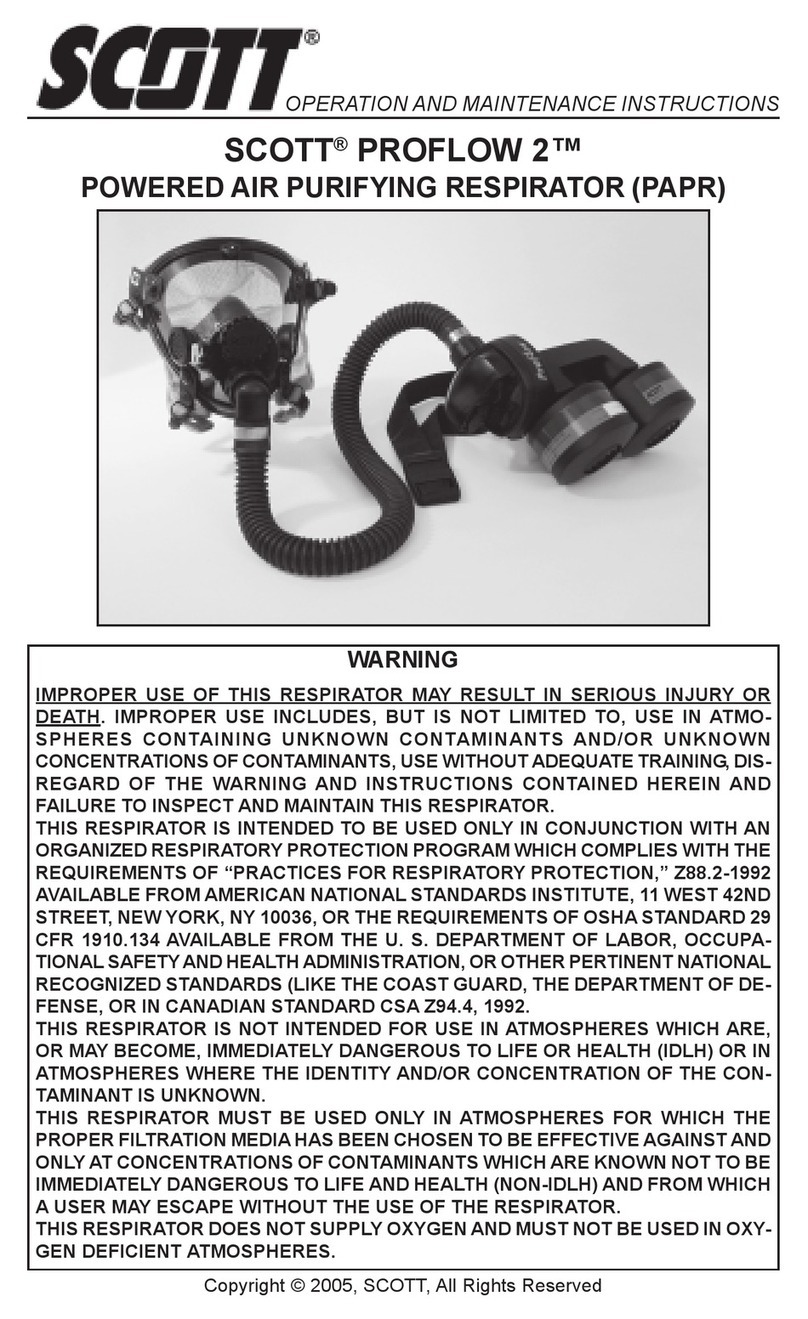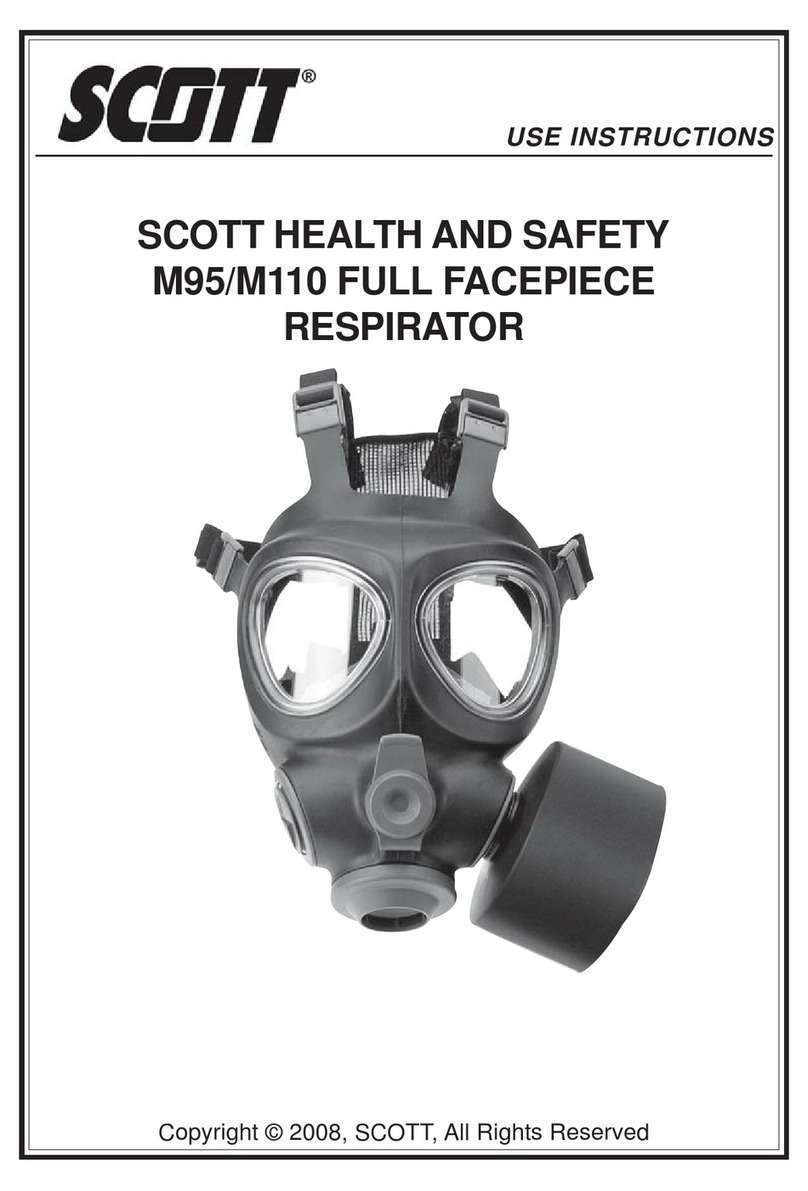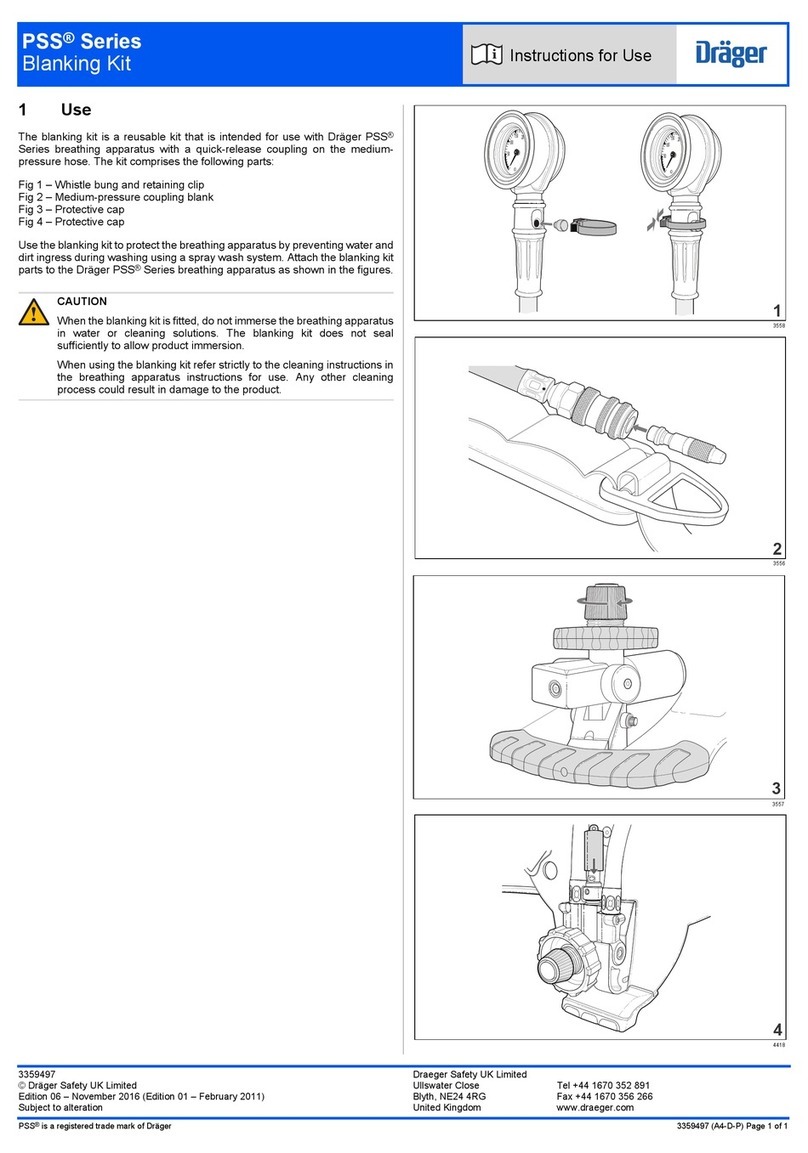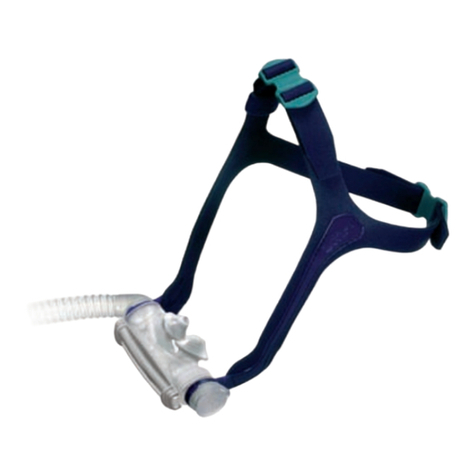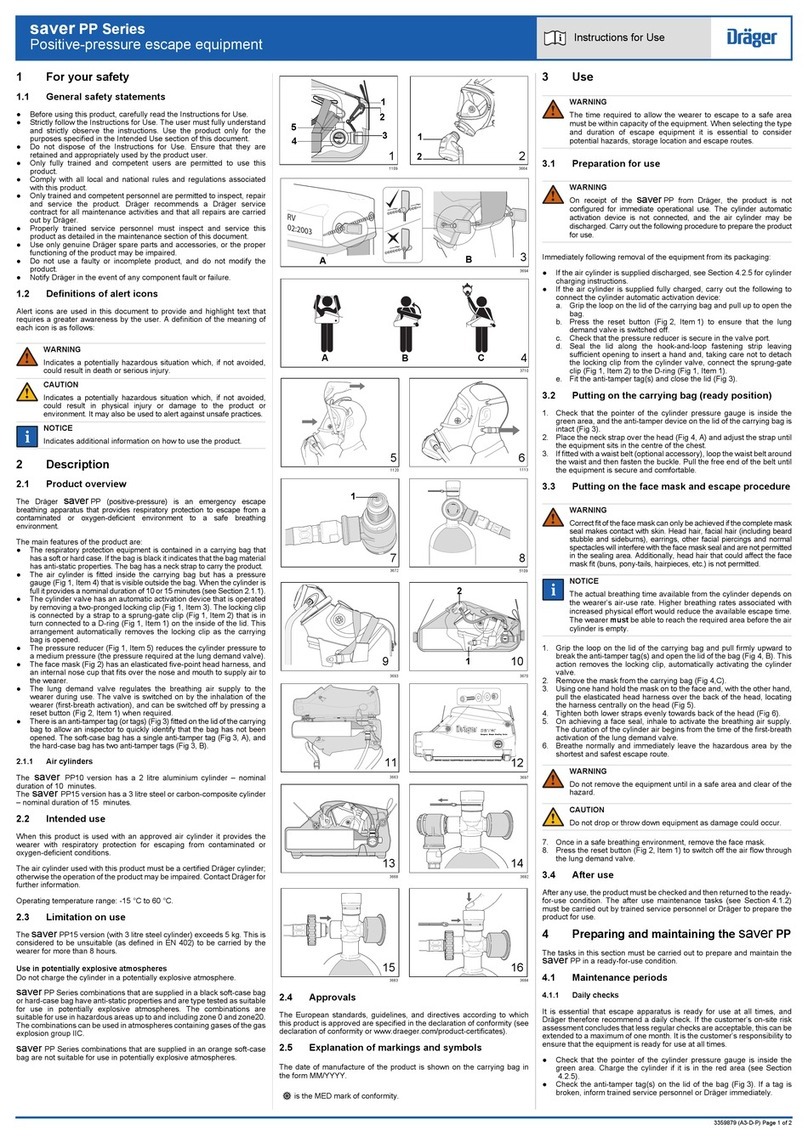
i
Self-contained Breathing Apparatus
Contents
WARNINGS ...............................................................................................................................................................................ii
1. INTRODUCTION........................................................................................................................................................1
1.1 IMPORTANT ..............................................................................................................................................1
1.2 BREATHABLE AIR ....................................................................................................................................1
1.3 APPARATUS DURATION..........................................................................................................................1
1.4 PERSONNEL TRAINING...........................................................................................................................1
1.5 SERVICING ...............................................................................................................................................2
1.6 SPARE PARTS AND ACCESSORIES.......................................................................................................2
1.7 NOTIFIED BODIES....................................................................................................................................2
2. TECHNICAL DESCRIPTION .....................................................................................................................................2
2.1 GENERAL ..................................................................................................................................................2
2.2 APPARATUS DESCRIPTION ....................................................................................................................2
2.3 PNEUMATIC SYSTEM ..............................................................................................................................4
2.4 REDUCER .................................................................................................................................................4
2.5 DEMAND VALVE .......................................................................................................................................4
2.6 FACEMASKS .............................................................................................................................................5
3. PRE-USE AND MONTHLY CHECKS........................................................................................................................6
3.1 GENERAL ..................................................................................................................................................6
3.2 PNEUMATICS............................................................................................................................................6
3.3 DEMAND VALVE .......................................................................................................................................6
3.4 CHECK FACEMASK..................................................................................................................................6
3.5 POSITIVE PRESSURE, BYPASS AND LEAK TEST.................................................................................7
3.6 WHISTLE TEST.........................................................................................................................................7
3.7 REPLACING CYLINDERS .........................................................................................................................7
3.7.1 Fitting a replacement Cylinder of the same size. .......................................................................8
3.7.2 Fitting a replacement Cylinder of a different size.......................................................................8
4. DONNING PROCEDURE ..........................................................................................................................................8
4.1 HARNESS..................................................................................................................................................8
4.2 DON FACEMASK ......................................................................................................................................8
4.2.1 Head Harness............................................................................................................................8
4.2.2 Head-net ....................................................................................................................................9
4.3 OPEN CYLINDER VALVE .........................................................................................................................9
4.4 FACEMASK SEAL CHECK...................................................................................................................... 10
4.5 BYPASS CHECK ..................................................................................................................................... 10
4.6 LEAK TEST.............................................................................................................................................. 10
4.7 WHISTLE TEST....................................................................................................................................... 10
4.8 CYLINDER PRESSURE .......................................................................................................................... 11
5. DOFFING INSTRUCTIONS ..................................................................................................................................... 11
5.1 REMOVE FACEMASK............................................................................................................................. 11
5.2 TURN OFF CYLINDER ............................................................................................................................ 12
5.3 REMOVE APPARATUS........................................................................................................................... 12
5.4 CLEAN AND CHECK APPARATUS ........................................................................................................ 12
6. AFTER USE............................................................................................................................................................. 12
6.1 CLEAN FACEMASK ................................................................................................................................ 12
6.2 CLEAN APPARATUS .............................................................................................................................. 13
6.3 DEMAND VALVE ..................................................................................................................................... 13
6.4 CHECK APPARATUS.............................................................................................................................. 13
6.5 FIT FULLY CHARGED CYLINDER.......................................................................................................... 13
6.6 LEAK TEST.............................................................................................................................................. 13
6.7 RECORD TEST DETAILS ....................................................................................................................... 14
6.8 STORAGE................................................................................................................................................ 14
7. SCHEDULED MAINTENANCE................................................................................................................................ 14
7.1 MONTHLY................................................................................................................................................ 14
7.2 ANNUALLY .............................................................................................................................................. 14
Registered Office: Scott Health and Safety Limited, Pimbo Road, West Pimbo,
Skelmersdale, Lancashire, WN8 9RA, England.
